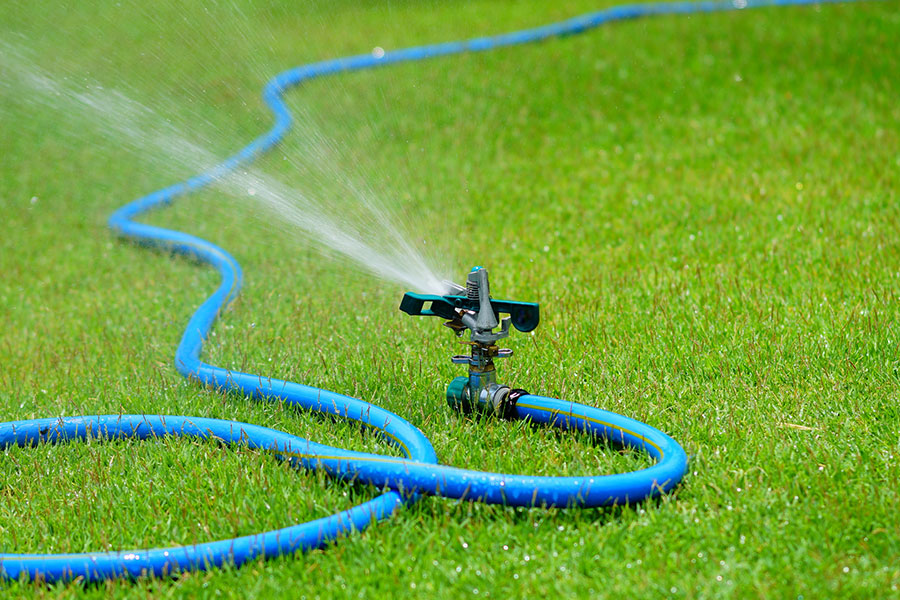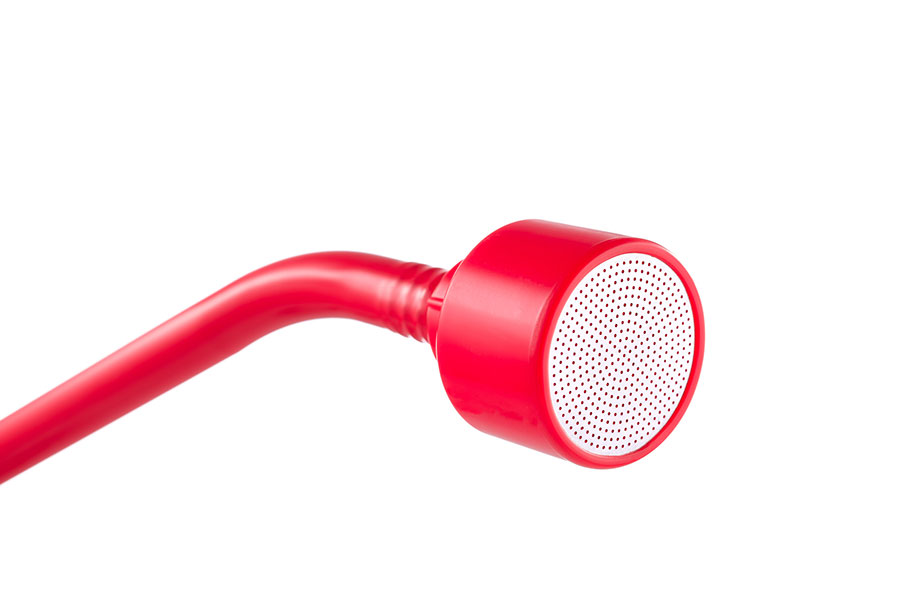Tips to suit all plants and conditions
The NAIT grounds are proof that there are no hard and fast rules about watering plants that are emerging from long, cold naps. But they’re also proof that not everything goes.
Take the lawn near the campus LRT station. At the beginning of May, it’s a lush, green, suburbanite dream. Then take a look at the quad, that large, bowl-shaped expanse of grass south of the Centre for Applied Technology. Or, maybe don’t. Still brown and patchy by mid-May, it’s none too pretty.
“We should have started [watering there] some time ago,” says Dan Tavenier, grounds supervisor at NAIT.
The reasons for the difference are location and soil conditions. That nice lawn is flat and the soil is decent; in contrast, the quad is a depression with sloping sides (it’s meant to temporarily hold water runoff from campus buildings so as not to overwhelm city drains) and the soil is poor and compacted, says Tavenier. Therefore, the two areas require a different watering approach.
Your yard acts the same way. Care for plants should almost always be delivered on a case-by-case basis, while always aiming for balance.
“Water as much as needed and as little as possible,” says Tavenier. Here’s how.
Green up the grass
 Tavenier doesn’t usually recommend watering the lawn too early in the season. “Dowsing a lawn with cold water is normally not a good thing.” It can keep soil temperature down, delaying growth. The trouble is, grass roots do not run deep. If the top one to three inches (2.5 to 7.5 centimetres) of underlying soil stay dry for long, such as when persistently windy days suck moisture from the soil, consider turning on the taps.
Tavenier doesn’t usually recommend watering the lawn too early in the season. “Dowsing a lawn with cold water is normally not a good thing.” It can keep soil temperature down, delaying growth. The trouble is, grass roots do not run deep. If the top one to three inches (2.5 to 7.5 centimetres) of underlying soil stay dry for long, such as when persistently windy days suck moisture from the soil, consider turning on the taps.
“Dowsing a lawn with cold water is normally not a good thing.”
An inch a week is all you need, says Tavenier. Use a rain gauge to tell you when you’re done. If you’re watering on a slope, cut the water when you notice runoff. Let the it soak in before restarting. Aeration can help with water uptake.
Some plants are tougher than others
 Established trees and shrubs know how to take care of themselves, says Tavenier. But if you want to help, “The best thing you can do is take the grass well away from the trunk,” because it intercepts moisture and nutrients. Replace it with two to three inches (five to 7.5 cm) of organic mulch (bark chips, for example) and skip the landscape fabric, which can trap excess moisture.
Established trees and shrubs know how to take care of themselves, says Tavenier. But if you want to help, “The best thing you can do is take the grass well away from the trunk,” because it intercepts moisture and nutrients. Replace it with two to three inches (five to 7.5 cm) of organic mulch (bark chips, for example) and skip the landscape fabric, which can trap excess moisture.
At the same time, don’t forget about last season’s transplants, which have yet to root. Dig as deep as the bottom of the root ball to check that you’ve watered enough. Be wary of keeping plants too wet, however, which can get in the way of the gas exchange that that keeps roots healthy. “A lot of material is damaged by overwatering,” says Tavenier.
“A lot of material is damaged by overwatering.”
Check that the top inch or two of soil has dried out before watering again, which will vary depending on sunshine, wind, soil conditions and even plant type.
Fibrous-rooted perennials, even if established, tend to need similar treatment in a dry spring, he adds. Perennials with deeper-reaching tap roots should be fine.
Water at the right time
 Evaporation is the enemy. Water in the morning when it’s cooler, says Tavenier. “Less is lost to the atmosphere” compared to watering during the heat of the day.
Evaporation is the enemy. Water in the morning when it’s cooler, says Tavenier. “Less is lost to the atmosphere” compared to watering during the heat of the day.
Early watering also helps prevent foliage problems. Afternoon or evening watering can leave droplets on leaves that create ideal conditions for diseases.
Get the right tools

The best thing about a broadcast sprinkler may be how much fun kids have jumping through it. The grass may not enjoy it quite so much, as that wall of water can be swept away by the wind. Try an impulse sprinkler instead, which sprays a consistent stream close to the surface of the lawn.
As for plants, “directed water is always better,” says Tavenier. If a tree needs a dose, drop a hose at the dripline, that circumference defined by how far the branches reach, for half an hour or so. Better yet, use a root feeder tool, a long needle that can be attached to the hose and inserted into the ground, to inject water beneath the turf.
Watering cans be used to deliver the same amount of water every session.
Water shrubs and perennials with a wand attached to the hose, and aim for the base of the plants. Tavenier likes watering cans as well, as they can be used to deliver the same amount of water every session. Hauling water is harder on the body, so consider splurging on ergonomic models, he adds, such as Haws.
Watering may be a “monotonous task,” say Tavenier, that requires “sustained attention.” But it shouldn’t hurt.
Why didn’t the late snowfall help?
With all the late-winter and early spring snow we saw, why does the Alberta soil tend to be dry ? We asked CTV meteorologist Josh Classen (Radio and Television – Television ’96) why the snow may not have made the difference we thought it would. The main culprit, suggests Classen, may have been the cold snap.
“February was so cold that the ground remained frozen solid to a good depth.”
“February was so cold that the ground remained frozen solid to a good depth.” This was followed by cold mornings through mid-March, he adds, then a sudden onset of warm days.
“Snow depth shrunk quickly as the melt kicked into high gear,” says Classen, who builds his theory on numbers including 135 millimetres of precipitation from Oct. 1 to May 1 (in the Edmonton area) and a snowpack of 31 cm on March 17. “With the ground still at least somewhat frozen, that snow couldn’t soak in and get absorbed by the ground.” Instead, much of it ran off and into city drains.